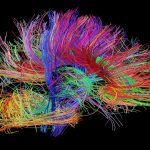Brain Preservation and Personal Identity Part II
The first article of this series introduced the philosophy of personal identity. Most importantly, it presented an overview of the two primary theories of identity, namely body or biological identity (in which identity is associated with a particular physical system) and psychological identity (in which identity is associated with a cohesive span of memories covering a substantial portion of one’s life, coupled with other personality characteristics). This second article offers a deeper analysis of the problems both theories suffer from and recommends a third alternative, a variant on psychological identity best described as branching identity.
The greatest challenge to all theories of identity including the psychological theory was formulated in the mid-twentieth century and is known as the reduplication argument. The most common formulation of the reduplication argument involves imagining a hypothetical case of dual brain hemisphere transplants. In this scenario the left and right brain hemispheres are transplanted into separate donor bodies (neither donor body has a brain to begin with). Does identity follow the left half or right half of the brain? Assuming the possibility of identical brain hemispheres there seems no way to decide: each brain hemisphere is equally psychologically and biologically continuous with the whole brain. Clearly the reduplication argument is equally challenging to body identity since equal halves of the original substrate remain in each of the two resulting subjects’ heads. Aside from the forced choice of which hemisphere retains the subject’s identity, another common answer to the reduplication argument is that neither brain hemisphere retains identity. The problem with this answer is that identity clearly continues if only one hemisphere is transplanted and the other is destroyed. In fact, in real world cases where one hemisphere is destroyed or removed all parties involved (doctors, family, and the patient) readily allow identity preservation by the patient’s remaining hemisphere. It is implicitly paradoxical that identity in the left hemisphere depends on whether or not the right hemisphere is destroyed or transplanted (by extension, what if the right hemisphere were preserved but never revived?).
The reduplication argument also shows that the psychological and biological theories of identity are not transitive. In the transplant example above, the left half of the brain is psychologically (and biologically) continuous with the original brain and the original brain is psychologically (and biologically) continuous with the right half of the brain, yet after the transplant the left and right brain hemispheres are not psychologically or biologically continuous with each other. Many philosophers refuse to give up on the psychological identity theory and suggest we need to bite the bullet and accept that the kind of identity that matters is not a transitive relation. Derek Parfit suggests that the property we care about is what he calls Relation R, the continuous psychological relation between various persons under consideration. He has also described this property as simply personal survival, where survival follows the psychological criteria of identity. In the dual brain hemisphere transplant, Parfit would argue that identity is not preserved but that this fact does not matter: what matters to Parfit is that the Relation R continues, or that the procedure be interpreted as survival as opposed to death. To reiterate this point, since we regard the process as survival if there is a single transplanted hemisphere, the mere addition of a revived second hemisphere cannot alter this conclusion: it must still be survival–somehow! Even if a dual revival renders preserved identity so contentious as to be deemed entirely lost, the process nevertheless involves successful survival, and Parfit claims this is what really matters in the first place.
Alternatively, it has been proposed that a variation on psychological identity can best describe the underlying nature of personal identity, but we must carefully describe the transformation that identity undergoes in a situation like the dual brain transplant scenario. The proposal is that all psychological continuations indicate valid identity continuations in their own right. If the brain is split, then each of the resulting brains, minds, and persons should be regarded as continuations of the identity that stood before the brain-splitting procedure. This approach is known as branching identity. At first glance, this conclusion is problematic due to our conceptualization of identity as a singular notion: how can two independent identities also be considered “the same identity”. The solution is to distinguish “sameness of identity” from “continuations of the same identity”. Both subjects emerging from a dual transplant procedure can be continuations of a single identity without being the same identity themselves. The only way that such a concept can be allowed is through a metaphysical process in which a single identity divides into two daughter identities, henceforth unique and independent, but both equally descendant from their common ancestral identity. Cerullo has described this concept as “branching” (Parfit also spoke in terms of “branching”) while Wiley has referred to it as “split”. Yet others have described the process as division or fission, but in all cases these terms describe the same idea, namely that personal identity may indeed divide forward in time, and may even do so in a way that renders it impossible to designate any one descendent identity as being of greater primacy to the original identity temporal stream.
Branching identity offers one of the most consistent explanations of identity yet proposed. First and foremost it accommodates otherwise paradoxical thought experiments and hypothetical scenarios in a nonparadoxical way where other identity theories suffer from serious problems. This is precisely what was shown above. The reduplication argument is highly problematic for body identity theories as well as for nonbranching psychological identity theories, but branching identity suffers no such challenge.
Suggested Readings:
Michael Cerullo (2014) Uploading and Branching Identity — Available online at:
http://link.springer.com/article/10.1007%2Fs11023-014-9352-8
Keith Wiley (2014) A Taxonomy and Metaphysics of Mind-Uploading — Available online at:
http://www.amazon.com/dp/0692279849
Parfit (1971) “Personal Identity”, Philosophical Review 80: pp. 3-27. — Available online at:
http://www.uvm.edu/~lderosse/courses/metaph/Parfit(1971).pdf









